Use 'Print preview' to check the number of pages and printer settings.
Print functionality varies between browsers.
Printable page generated Saturday, 22 November 2025, 12:00 PM
Section 1: A vision for teacher education
Introduction
In this first section you will reflect on your ideas about teaching and learning and consider the implications for teacher educators of national policy aspirations for active learning and teaching. For example, what does it look like in practice? Is your own practice learner-centred? How can teachers be supported in promoting active learning and teaching and in being more learner-centred?
This section will also provide an introduction to issues around using ICT to support classroom teaching and an introduction to Open Educational Resources (OER). You will find out about TESSA, a large-scale OER Teacher Education programme.
In total there are nine activities in this first week, including a quiz that is part of your course assessment.
A vision for teacher education

Fundamental change is difficult to achieve and takes time. This course is just the start of your journey. Each week we will provide you with tools that will help you to gradually develop your own expertise in the sorts of classroom approaches that teachers will need to use if national policy aspirations across Africa are to be realised.
In this first activity you will begin to consider and articulate your vision for effective teaching and learning.
Activity 1.1: Your vision 
Teacher educators are crucial if current policy aspirations are to be realised. In this activity you will reflect on your own vision for learning and teaching, and the sort of teacher educator you would like to be. In your notebook record your responses to the following questions:
- Write down some words or phrases to describe your vision for quality learning and teaching. To inform your description think about what an ideal school classroom looks like. What would the teachers and students be doing? What role would the teacher be playing? How would teachers treat their students?
- Ken Robinson is a speaker and international advisor on education to governmental, non-profit, education and arts bodies. Watch a short video of Ken Robinson speaking:
- Why does Ken Robinson compare teaching to gardening? Do you agree with what Ken says?
- What conditions could you create in your context for teachers and student teachers to flourish?
National policy

There are many similarities between national policies across Africa. For example, the National Curriculum Policy for Kenya (2015, p. 17) states:
To enhance the pedagogical approaches, the Ministry of Education, Science and Technology (MOEST) will pursue the following policies:
- Enhance pedagogical approaches that support creativity, innovation, critical thinking; and
- Enhance teacher quality for effective implementation to ensure acquisition of competencies that ensure life skills.
The ‘enhancing of pedagogical approaches’ applies to teachers and teacher educators. It is difficult for student teachers and experienced teachers to know how to change if they have not experienced active learning and teaching and have not had the opportunity to observe it in school.
Teacher educators have a big responsibility when it comes to implementing policies like this. And Kenya is not unusual; this is a common policy aspiration across Africa. This quote is from The Zambia Education Curriculum Framework 2013 (p. 56) and forms the basis for the revised school curriculum implemented in 2016:
The teachers and teacher-educators should as much as possible, use methods that promote active learners’ participation and interaction. In addition, they should use methods that encourage learners to reflect, think and do rather than reproduce from rote learning. In this regard, teachers and teacher-educators are strongly advised to use the Learner-Centred Approach in the teaching and learning process.
In the next activity you will be thinking about the policy in your own country and what needs to change in classrooms in your country.
Activity 1.2: Educational policy and teacher education 
Record your response to the following questions in your notebook:
- What views or ideas about teaching and learning underpin government education policy in your country?
- What are the main differences between the national vision and your own experience (at school/teaching training college/university)?
- What needs to change in classrooms in your country? Imagine you are looking through a classroom window and describe what you would like to see the students and teacher doing.
If you can, discuss these questions with a colleague. What are the implications of your Government’s policy aspirations for teacher education in your country?
Later in the course you will have the opportunity to reflect about what ‘active learning and teaching’ looks like in practice and on how you can support students in developing a vision for effective teaching.
Tools for the 21st century: ICT
If you read the National Policy documents for many African countries, you will see references to the power of Information Communication Technology (ICT) to support change.
The Kenya Policy document, for example, makes it clear that people in all levels of the system require skills in using and creating ICT resources, and that ICT can support learning. But what do we mean by ICT?
It is tempting to think that a well-equipped school or college will be full of computers. However, computers are expensive and require looking after. There are many cheaper forms of technology that can be just as helpful in supporting teachers and teacher educators.
Activity 1.3: Focusing on technology
The pictures below show examples of ICT equipment. What ICT do you have access to? What ICT do you use in your work? Make notes in your study notebook.
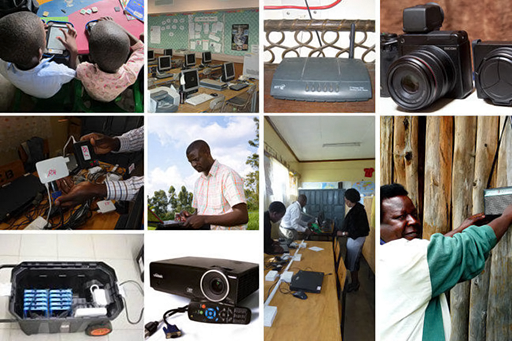
The document ‘Making the most of ICT’, available as either a Word file or a PDF, is a table. The left-hand column gives examples of ICT that could be used to support learning. If possible, work with a colleague in your institution to fill in as much of the table as you can. It doesn’t matter if you leave most of the boxes blank; you are going to re-visit this table in Section 3.
UNESCO has produced an ICT Competency Framework for teachers which is a high-level document for policy makers and people who are concerned with organising professional development for teachers. In the next activity you will be introduced to the UNESCO ICT Competency Framework.
Activity 1.4: UNESCO ICT Competency Framework for Teachers 
Read the Executive Summary of the UNESCO ICT Competency Framework for Teachers (pp. 7–10). This course addresses ‘knowledge acquisition’ and providing tools to help you move towards ‘knowledge deepening’. Now consider the following questions and note your responses:
- How much overlap is there between the introduction to this document and your country’s policy on ICT in education?
- The grid (p. 10) provides a structure for thinking about how to integrate ICT into learning. Look at the column on ‘knowledge acquisition’. Based on your experience of working with teachers, what is the extent of their ‘knowledge’? How many of them have mobile phones, tablet computers or laptops? Do they use these in their planning and teaching?
- What are the main challenges that you face in supporting teachers in using ICT? In your study notebook, make a list of things that you need to learn. This may include specific ICT skills or pedagogical skills.
- If possible, discuss with your colleagues what use you might make of the UNESCO ICT Competency Framework in your work with pre- or in-service teachers.
Later in this course you will consider how to help student teachers to integrate ICT into their teaching and how to use ICT in your own work.
Open Educational Resources
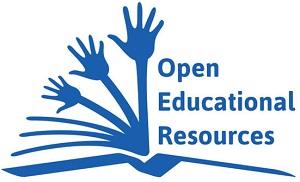
When an author publishes a book or other educational resources, they own the copyright. In most cases this means that people must pay the author for access to their work, and if they use an idea from that work they must reference the original author.
The internet makes it easier for everyone to share content across the world and for educators to share and adapt materials. The idea of sharing resources is the basis of OER. These are resources with an open licence, where the author or creator remains as the rights-holder but chooses which rights to retain and which rights to waive. In an OER the creator allows users to access and reproduce the materials without cost and, under certain open licences, to adapt or change the resource. The user does not need permission from the author to use the resource.
There are six types of Creative Commons licence, which are explained on the Creative Commons website.
The definition of OER is:
… any type of educational materials that are in the public domain or introduced with an open license. The nature of these open materials means that anyone can legally and freely copy, use, adapt and re-share them. OERs range from textbooks to curricula, syllabi, lecture notes, assignments, tests, projects, audio, video and animation.
Advocates of OER argue that they can support improvements in education by giving everyone access to a much wider range of materials. This is particularly important in contexts where there are few materials or limited access to institutions of learning. However, just accessing OER will not bring about change; it is using the ideas in classrooms and workshops that matters. Some of the content in OER might be just what you need; some might not. You need to develop the ability to focus on what you need and to critically review material you find on the internet.
In the next activity you will explore some websites to find out more about OER and look at some examples of the sort of resources available.
Activity 1.5: Exploring OER
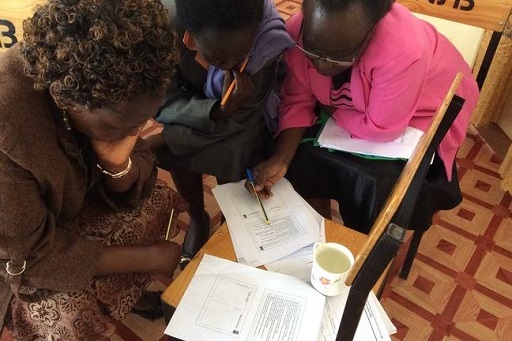
- a.Explore the UNESCO website to find out more about OER. Read the main page and follow any of the links in the right- and left-hand margins that interest you.
b.Skim-read the Commonwealth of Learning’s A Basic Guide to OER, looking at any sections that seem particularly relevant to you.
As you explore these resources, make notes in your study notebook on how OER might help you to address some of the things that need to change that were highlighted in the comments in the activity on educational policy and teacher education activity (Activity 1.2).
c.Explore African Storybook and see if you can find some stories in one of the African languages used in your country.
Then look at OER Africa, particularly the ‘African Teacher Educator network’ link at the bottom of the main page.
Reflection point 
How might you use these sites with teachers? For example, what would you want them to gain or learn from exploring these sites? What follow-up activities might you get them to do? How would these change or develop their ideas and classroom practice?
An introduction to TESSA

In 2005, The Open University secured funding to develop OER to support teachers and teacher educators in developing more active approaches to teaching and learning, in line with national policy aspirations.
A consortium of authors and reviewers was formed with representatives from 14 teacher education institutions in nine African countries. The result is a bank of collaboratively produced OER which has been versioned for different contexts and is available in four languages.
The pedagogy of the TESSA OER positions teachers as learners. The OER show teachers and teacher educators how to translate theory into practice.
They are designed to open up possibilities for educators and, through case studies, show how they can make their teaching more interactive and engaging for learners. An independent evaluation report, published in 2012, found that TESSA had created a demand for Continuing Professional Development (CPD) as teachers realised the potential for change within the constraints in which they were working.
The TESSA OER provide structured learning opportunities for teachers, related to the Primary curriculum and the Secondary Science curriculum, helping them to see how active teaching and learning works in practice. There are also handbooks and toolkits, explaining how the resources can be used in different contexts. Throughout this course we will be drawing on the TESSA OER to help you to develop your practice and better support the teachers and student teachers that you are working with.
The pedagogy in the TESSA OER focuses on modelling practice for teachers that consistently conceptualises learners (whether they are students or teachers) as:
- knowledgeable individuals with a range of experiences that they bring to their learning
- constructors of meaning and problem solvers
- self-regulated, self-directed social beings
- intrinsically motivated if learning activities have personal meaning and cultural authenticity.
Activity 1.6: The TESSA OER

Listen to Dr Henry Busulwa from Makerere University in Uganda talking about the TESSA programme and the importance of ‘openness’. There is an accompanying transcript of the audio that you can read at the bottom of the page.
As you listen write down any thoughts about the key points he makes about the TESSA OER in your notebook.
Transcript
The TESSA OER were developed between 2005 and 2008. They are specifically linked to school curricula and remain current despite recent changes to the curriculum in many countries. This is because the focus of recent changes are teaching approaches rather than content. In Zambia for example, teachers are expected to teach knowledge, skills and values; the TESSA OER supports the teaching of all three.
Although they are designed for teachers, the TESSA OER are relevant to teacher educators. Recent research suggests that teacher preparation courses and in-service training courses, need to place more emphasis on the practicalities of teaching in order to improve the quality of classroom learning. This is difficult for teacher educators because, although most have a good knowledge of the theory of teaching, many do not have the knowledge and experience of classrooms. The TESSA OER provide practical examples of how to teach specific topics which help teacher educators to model good teaching.
In Week 2 of this course, you will focus on learner-centred education.
Learner-centred education is not a set of particular approaches to teaching; it is about values and beliefs. Learner-centred teachers will take account of the needs of their learners; they will make links between the school curriculum and children’s lives; and take account of their prior learning experience. Most importantly, a learner-centred teacher believes that all learners can learn, given the right support. Through the Inclusive Education Toolkit subject resources, TESSA OER show teachers and teacher educators how to provide that support.
The fact that the TESSA OER are Open Educational Resources means that as well as being available free of charge, you can copy, adapt and re-publish them. For example, you could include some of them in your course materials. There are two conditions attached to the copyright license: the first is that you say where you found the resources and the second is that you re-publish them under the same license.
TESSA is not an intervention or a set of prescriptive lesson plans. Rather it is a set of ideas, relevant to their local context that teachers can use. It is hoped that by using TESSA OER, teachers will develop their ability as professionals to plan their own lessons, according to the needs of their learners. Likewise, teacher educators can use TESSA OER to plan interactive teaching sessions which reflect classroom realities.
During this course we hope you will enjoy exploring the website and learning about TESSA OER. How could you use these resources in your work with student teachers?
You can also download a copy of the transcript.
Activity 1.7: Finding TESSA OER
Watch the short video that provides advice on how to look for and find resources on the TESSA website. This will help you in the next activity, when you will spend time exploring the website.
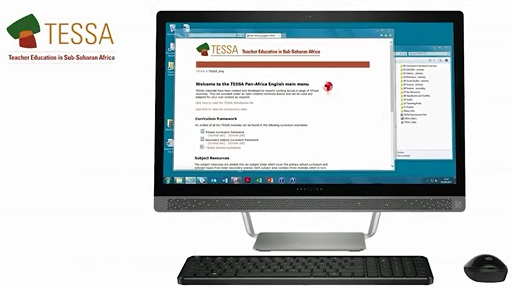
Transcript
Welcome to the TESSA Open Educational Resources. There is a lot of material available, so the purpose of this introduction is to give you some idea of where to start. If you are a teacher, then you will be most concerned about what you have to teach next week.
You should have a look at the subject resources. There are 75 sections of work, linked to the primary school curriculum. We also have 15 sections to support secondary science. The resources are organised into six groups to help you find what you need. These are: Literacy, Numeracy, Primary Science, Social Studies and the Arts, Life Skills and Secondary Science. Each group is divided into 3 modules and each module has 5 sections. Each section has three activities and three case studies – these contain ideas for you to try out in your classroom. The learning outcomes are for you, as by organising the activities you will be developing your skills as a teacher.
The sections are not grade specific. This is deliberate because topics are often re-visited as students get older. You will find that you can easily adapt the activities to suit your needs. For example, in one of the science activities, children make models of animals. In Grade 2 you could use this to teach the names of the different parts of the animal. In grade 5, you could use the activity to focus on adaptations for different habitats. Each section also has resources that will help you to organise the activities that are being suggested. There is also a handbook ‘Working with Pupils’ and a set of Key Resources. The Key Resources provide extra information about some of the teaching approaches that are being suggested. If you are a teacher educator working with pre-service teachers or in-service teachers, then you will find that the subject resources provide practical examples that you can use to illustrate some of the theory you have to teach. If you are teaching subject knowledge, then you could use some of the activities in your teaching. This way, you will be teaching content and pedagogy together, especially if you ask the students to reflect on how they learned as well as on what they have learned.
You will also find the key resources helpful as they explain various teaching approaches at a practical level. There is a handbook called working with teachers which has examples of how other teacher educators have used the resources. One thing that many people have found is that students find them very helpful during teaching practice. The teaching practice supervisor’s toolkit has a collection of tools which you can use to support students on teaching practice more effectively. And the inclusive education toolkit sets out the principles of inclusive teaching. It highlights examples from the subject resources that you could use to illustrate those principles. Remember – all these materials are free. You can adapt them as you wish and re-publish them for others to use, as long as you say where you have got them from. Good luck and we hope you find the TESSA OER helpful for your own professional development.
You can also download a copy of the transcript.
Activity 1.8: Exploring the TESSA OER
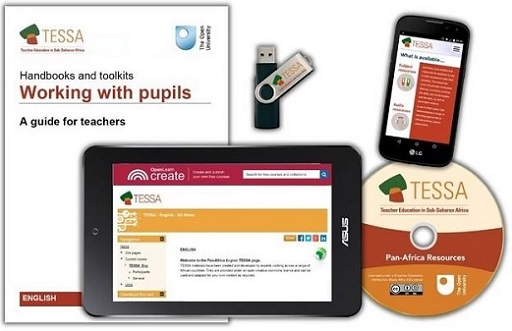
In this activity you will explore the TESSA website.
Spend some time exploring the TESSA website. (If you have any issues with the TESSA website try accessing the OER on OpenLearn Create. These are on the ‘Content’ tab.) You will find resources to support classroom teaching as well as handbooks and toolkits.
The future classroom
Providing ICT resources for schools can be very expensive and can take a while to arrange, especially if new buildings are required. Novel solutions can be found, such as building a classroom inside an old shipping container. It is easy to install, cheap to run, and cost effective.
You can see a solution like this in a short video of a ‘container classroom’ (watch from minutes 18:32 to 23:59). (There is also a summary of the video.)
You will probably not have access yet to a facility like this, but it will help you to see what the future could be like, and the sort of teaching that the teachers you are preparing will need to be able to do.
Activity 1.9: Review your learning
Now that you’ve come to the end of Section 1, it’s time to test your learning.
Moving forward
In this first section you have considered some of the challenges in meeting national policy aspirations.
You have been introduced to the three key themes of this course:
- understanding active learning and teaching
- appreciating how ICT can support national policy aspirations and the issues that that raises; and how to harness the potential of technology to support learning
- exploring the potential of OER to support active learning.
By studying these themes in more depth over the rest of the course, you will build a vision for teacher education that is fit for purpose and helps teachers and student teachers educate students for a globally connected world.
You should now move on to Section 2 of the course.